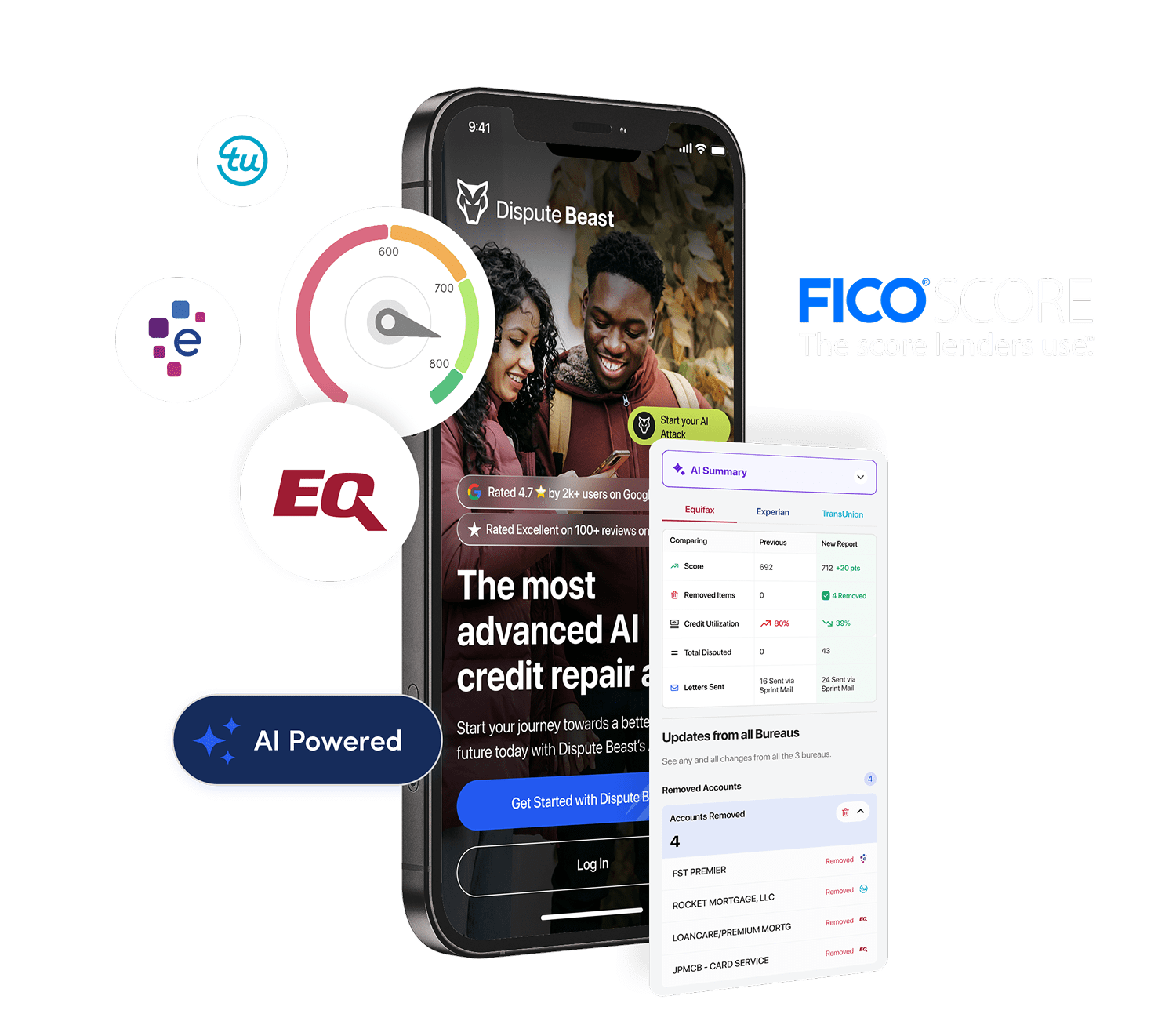A fresh start isn’t just a slogan—it’s a strategy, if 2024 felt like the year your finances ran you, make 2025 the year you run your finances. Repairing credit is central to that reset. A stronger score unlocks lower interest rates, easier approvals, better insurance pricing in many states, and even access to homes and jobs that screen with credit checks. The best way to repair credit this year blends three elements: accurate reports, positive new data, and consistent habits.
This guide shows you how to execute, step by step, so your next 6–12 months add up to a real fresh start.
Modern platforms like Dispute Beast are designed specifically to help consumers take control of this process, combining automation, legal compliance, and coaching to accelerate results.
Why 2025 Is the Right Year for a Fresh Start
The credit landscape changes constantly. Lenders are cautious, identity fraud continues to rise, and many consumers are emerging from a period of inflation and high rates. There’s a silver lining: modern tools make it easier than ever to take control. Automated disputing, three-bureau monitoring, and data-driven coaching compress work that used to take hours into minutes. If you commit to a simple routine for 6–12 months—review, dispute, rebuild, protect—you can make 2025 the year your credit turns a corner.
Bottom line: A fresh start is most effective when you combine accuracy, new positive signals, and discipline, everything in this guide reinforces those three pillars.
Understand the Real Cost of Bad Credit (and Why It’s Fixable)
Bad credit is expensive. Higher APRs on credit cards, auto loans, and mortgages add up to thousands over time. Renters with weaker credit may pay larger deposits, and some employers in sensitive industries review credit in hiring. None of that is destiny. Credit scores are designed to respond to new information. That’s good news: if you remove wrong data and add the right data consistently, the models respond.
For a plain-English overview of credit basics and consumer rights, start with the government’s consolidated portal at USA.gov.
Step 1: Get a Clean Picture—Pull All Three Reports
You can’t fix what you can’t see. Pull your credit reports from Experian, Equifax, and TransUnion. Thanks to federal law, you can request them for free through AnnualCreditReport.com. Each bureau’s file can differ because not all lenders report to all three, and updates land on different days.
Create a simple audit spreadsheet with columns for: Bureau, Creditor, Account # (last 4), Balance, Status, Date of First Delinquency (DoFD), Notes. You’ll use this to track issues and results.
What to flag immediately:
- Accounts you don’t recognize or that belong to someone else (possible mixed file).
- Duplicated debts (original creditor and a collector showing the same balance).
- Wrong dates (especially DoFD and payment dates).
- Balances that should be $0 after a settlement, discharge, or return.
- Personal data errors (misspelled names, old addresses tied to fraud).
For high-level consumer protections and dispute steps, the Consumer Financial Protection Bureau offers detailed, plain-English guides.
Step 2: Dispute Accurately—Use Compliance, Not Guesswork
Not every negative item is wrong; not every wrong item is obvious. The strongest disputes are factual and standards-based. Instead of a generic “not mine,” point to concrete defects: incorrect DoFD, wrong status code, balance that violates the terms of a prior settlement, or inconsistent information across bureaus. When a data furnisher or bureau can’t verify with complete and consistent records, the item must be corrected or removed under federal law.
Useful references while you write disputes:
- FCRA overview (rights & timelines).
- Debt collection rules (your protections).
- Identity theft recovery path (if fraud is involved).
Here is where Dispute Beast makes a big difference: instead of relying on vague templates, it generates Metro 2, FCRA, and FDCPA-based disputes that go not only to the three major bureaus, but also to creditors and data furnishers directly. This increases the chances of permanent removal.
Step 3: Expand the Net—Address Secondary Bureaus to Prevent Reinsertion
Many consumers clean up the three major bureaus only to watch errors reappear months later. The culprit is often secondary bureaus and data brokers (e.g., background and tenant screening databases). When those files still carry old data, it can flow back into your main reports or cause denials outside of lending (jobs, housing).
Common secondary agencies to be aware of include LexisNexis, Innovis, and CoreLogic, while you won’t use them every time, you should know they exist and that you have rights to dispute inaccuracies there as well. For broader consumer-reporting context, review the FTC’s consumer advice hub.
Dispute Beast is one of the few platforms that actively disputes with secondary bureaus, reducing the chance of reinsertion and giving you a more comprehensive cleanup.
Step 4: Build New Positive Credit—Don’t Just Delete Negatives
Scores improve fastest when you combine accurate deletions with new, clean data.
High-impact ways to add positive data:
- Secured credit card with a modest limit. Use lightly, pay in full.
- Credit-builder loan from a community bank or credit union. See NFCC.org for resources.
- Authorized user strategy on a spotless card (long age, low utilization).
- Automate on-time payments—just one late can undo months of progress.
For broader financial education, the FDIC’s Money Smart program provides helpful tools.
Step 5: Lower Utilization—The Fastest Legit “Score Win”
Utilization (balances ÷ credit limits) is one of the strongest levers you can pull quickly.
Tactics:
- Pay before the statement date, not just due date.
- Focus on the highest-utilization card first.
- Ask for credit line increases (soft pull).
- Use AZEO: All Zero Except One small balance.
For a glossary of credit terms, Investopedia is handy.
Step 6: Negotiate Intelligently—Settle, Don’t Spiral
If you’re behind, the best path is often structured negotiation:
- Goodwill adjustments for one-time lates.
- Pay-for-delete agreements with collectors (where permitted).
- Hardship programs and forbearance—ask if they report as “current.”
- Consolidation loans to lower APRs and utilization.
For nonprofit help, see NFCC.org and check businesses at BBB.org.
Step 7: Guard Against Identity Theft and Account Takeovers
Fraud is a growing risk. If you see unfamiliar accounts:
- File an Identity Theft Report.
- Place freezes with Experian, Equifax, and TransUnion.
- Learn recovery steps at Consumer.gov.
Step 8: Track Progress Like a Pro—Use a 40-Day Cycle
Credit repair works best on a repeatable schedule.
Your cycle:
- Day 0: Pull new reports.
- Day 1–2: Send disputes.
- Day 3–30: Pay balances, avoid inquiries.
- Day 31–40: Log responses, escalate weak verifications.
Dispute Beast automates this process, preparing and sending disputes across bureaus, creditors, and secondary agencies—saving you time while keeping everything compliant.
Step 9: Build a Fresh-Start Money System
Turn this year’s push into a durable system:
- Automatic bill pay.
- Weekly money reviews.
- Sinking funds for recurring expenses.
- Side income or upskilling. See CareerOneStop for resources.
Step 10: Know When to Ask for Help
When to seek support: multiple collections, divorce account mix-ups, or identity theft.
Prefer nonprofits first (NFCC.org). If hiring a service, check BBB.org. Use CFPB complaint portals if necessary.
Common Myths to Ignore in 2025
- “I have to wait seven years.” False—errors can be removed sooner.
- “Closing old cards helps.” Usually false—hurts utilization and age.
- “One dispute round fixes everything.” Multiple rounds are normal.
- “All help is a scam.” Vet providers; tools like Dispute Beast are legitimate and compliance-based.
Fresh-Start 6-Month Roadmap
- Month 1: Reports + audit + Round-1 disputes.
- Month 2: Pay down balances, escalate disputes.
- Month 3: Round-2 disputes, add new tradeline.
- Month 4: Negotiate collections, keep utilization <10%.
- Month 5: Round-3 disputes, reinforce budgeting.
- Month 6: Pull fresh reports, compare wins, repeat as needed.1
Putting It All Together
Audit, dispute, rebuild, lower utilization, track, and protect. Repeat every 40 days. If you want a compliance-backed, AI-powered system that handles disputes across bureaus and secondary agencies with a money-back guarantee, Dispute Beast is the smarter way to make your 2025 fresh start real.



